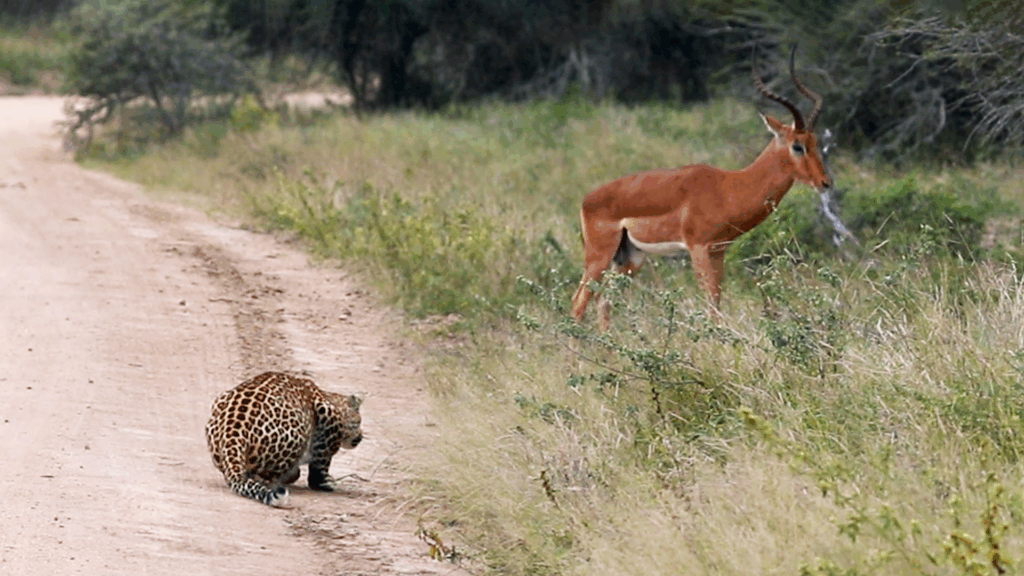
Matt Walsh filmed this remarkable stalk and sent it to Latest Sightings. He witnessed the action somewhere in South Africa’s Kruger National Park.
Hiding In Plain Sight
Matt’s video begins with a peculiar sight. In the foreground, near the roadside verge of a gravel road, a leopard stalks a male impala.
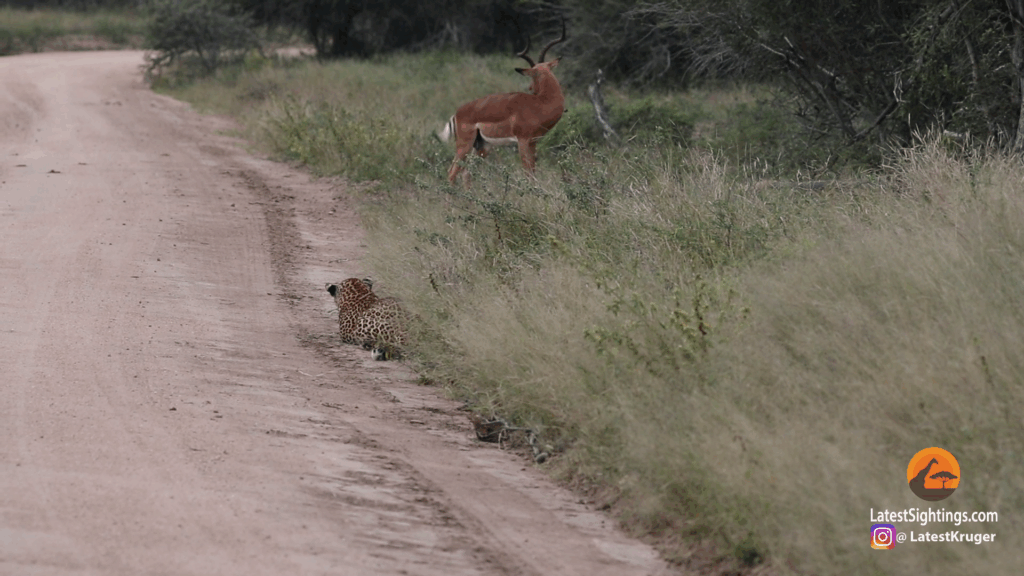
Judging by the fact that the impala is grooming, we can tell that it is completely unaware of the leopard’s presence.
Blissfully Unaware
So unaware that once it finishes grooming, it actually walks towards the leopard. As it does, the leopard flattens itself (ears included) against the ground.
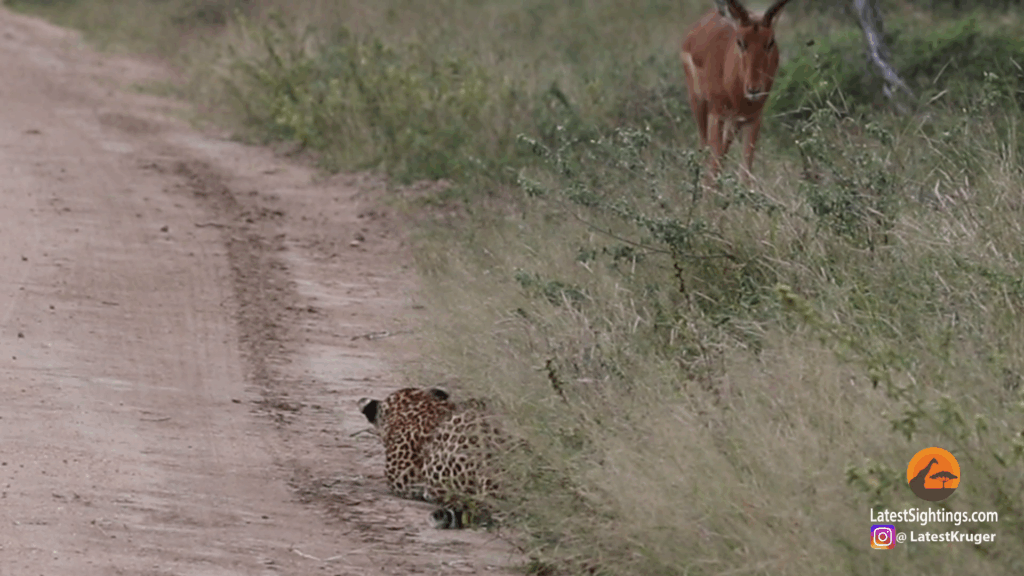
After approaching some distance, the impala pauses with its head held high to take in its surroundings. Amazingly, it is still unable to see the motionless leopard.
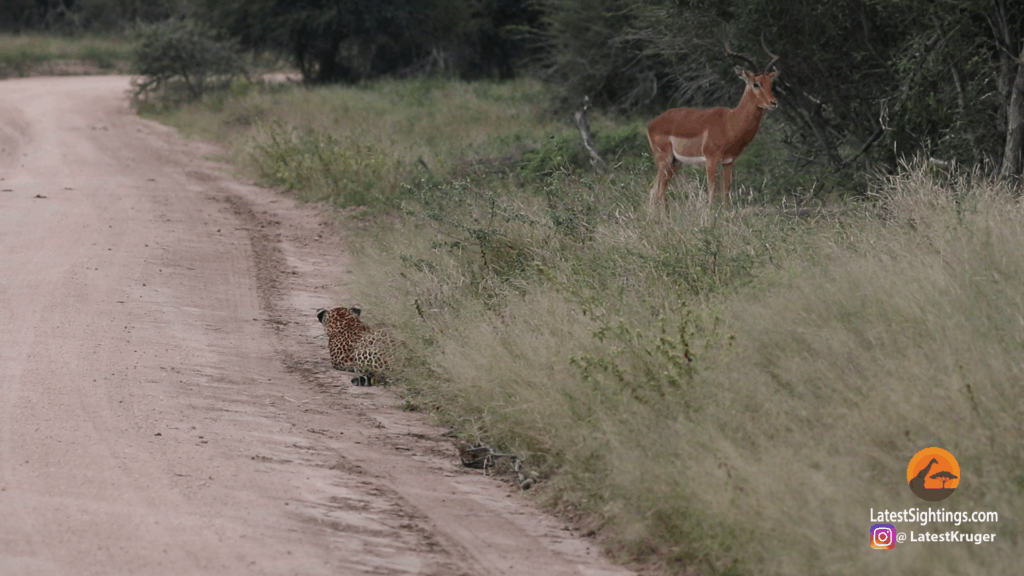
Ever cautious and patient, the leopard remains motionless even when the impala begins to graze again. Watching its every move, it waits until the right time to avoid alerting the impala to its presence.
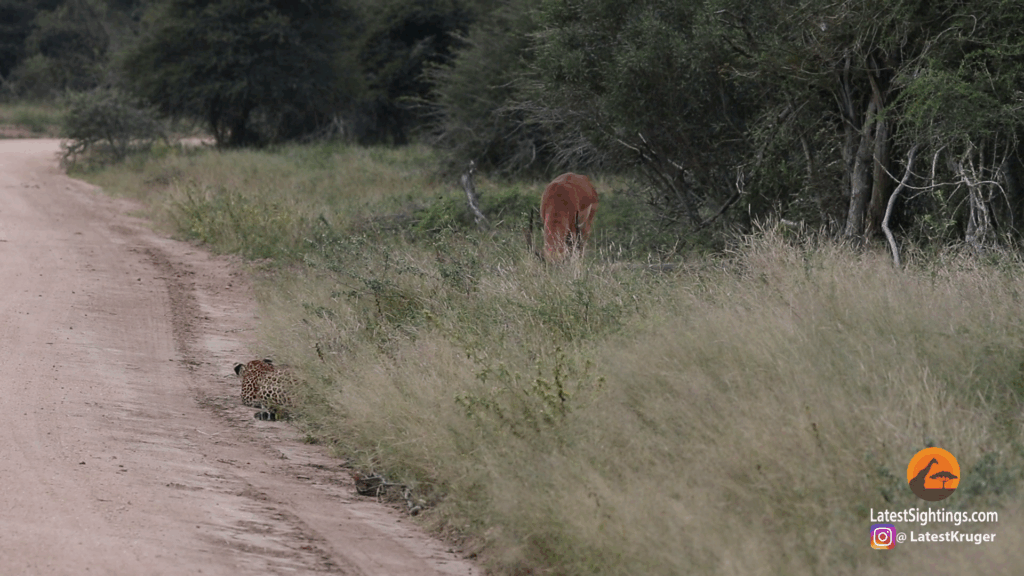
And just as well, for seconds later the impala again lifts its head. This process of grazing and then looking around is called predator vigilance.
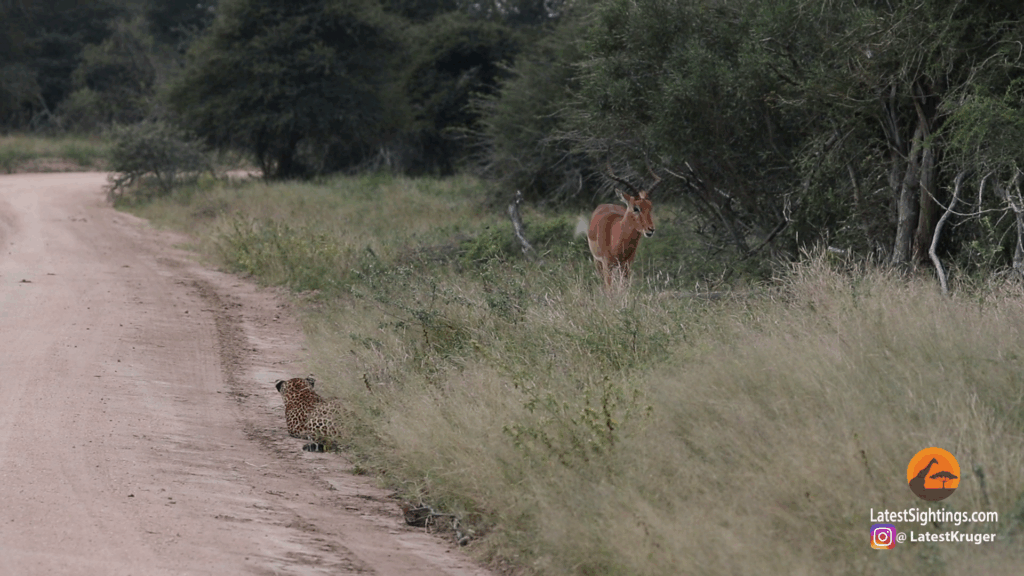
Time To Move
When the impala lowers its head back into the long grass, the leopard decides to stalk a bit closer. Keeping its body close to the ground, we see firsthand exactly where the term “leopard crawl” originated.
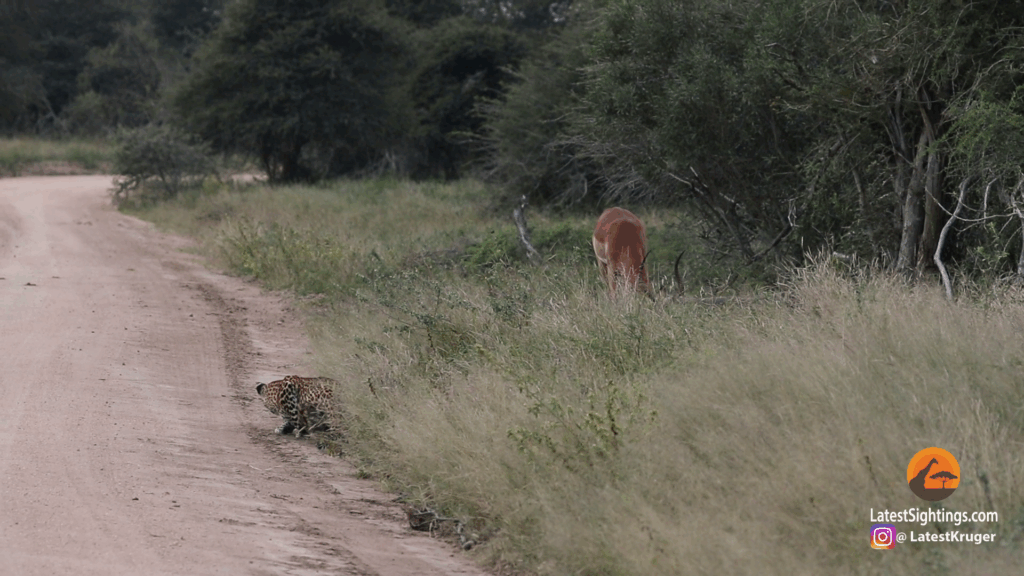
Like all cats, leopards are incredibly flexible and, with a low centre of gravity, can remain hidden with virtually no cover.
Poised For Action
Once in position, the predator gathers its legs beneath it, every muscle poised for the attack.
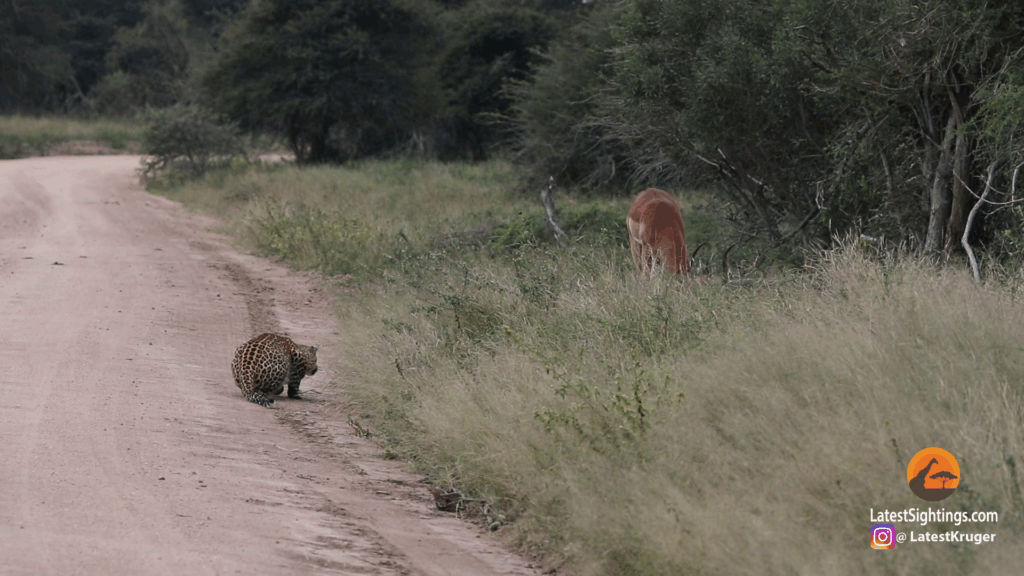
Then, with barely a twitch, the leopard springs into action… In just a few steps, it is up to full speed, streaking towards its target. Leopards can attain a top speed of 58 km/h.

Get our Best Sightings as they Come in
Spooked!
However, those few steps to acceleration are all it takes to alert the impala to the approaching danger. Showing incredible reflexes of its own, it turns to flee.
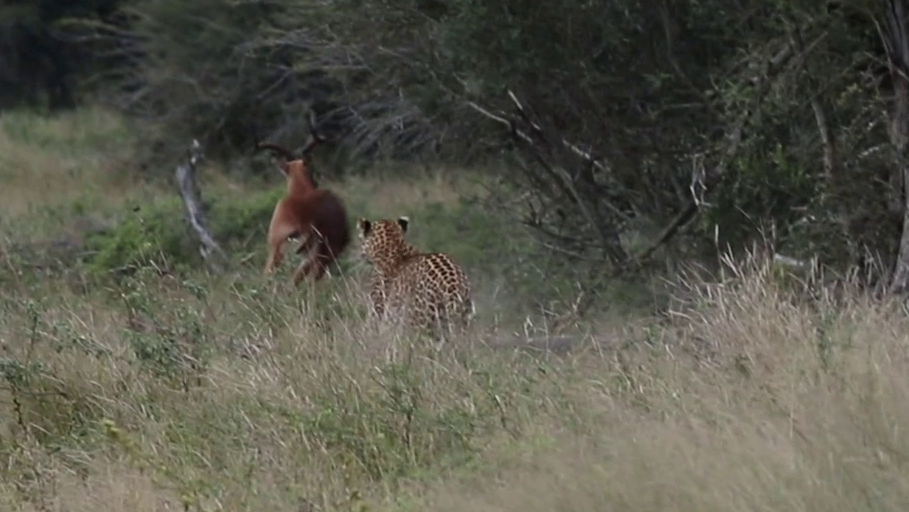
As fast as the leopard is, the impala is faster. In a few giant strides, it manages to escape the pursuing predator. But the odds aren’t in the leopard’s favour, impalas can attain a top speed of 75 – 90 km/h, often along a zig-zag path.
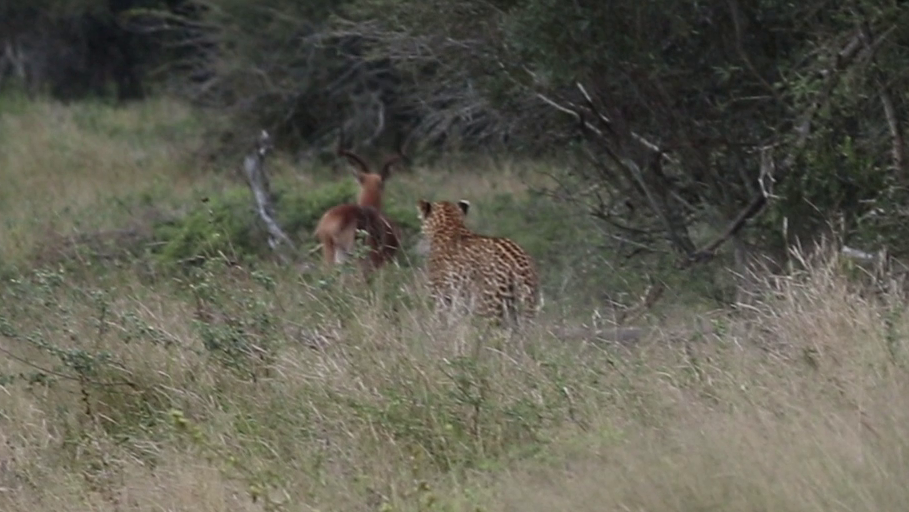
Not wanting to expend energy unnecessarily, the leopard cuts short its pursuit.
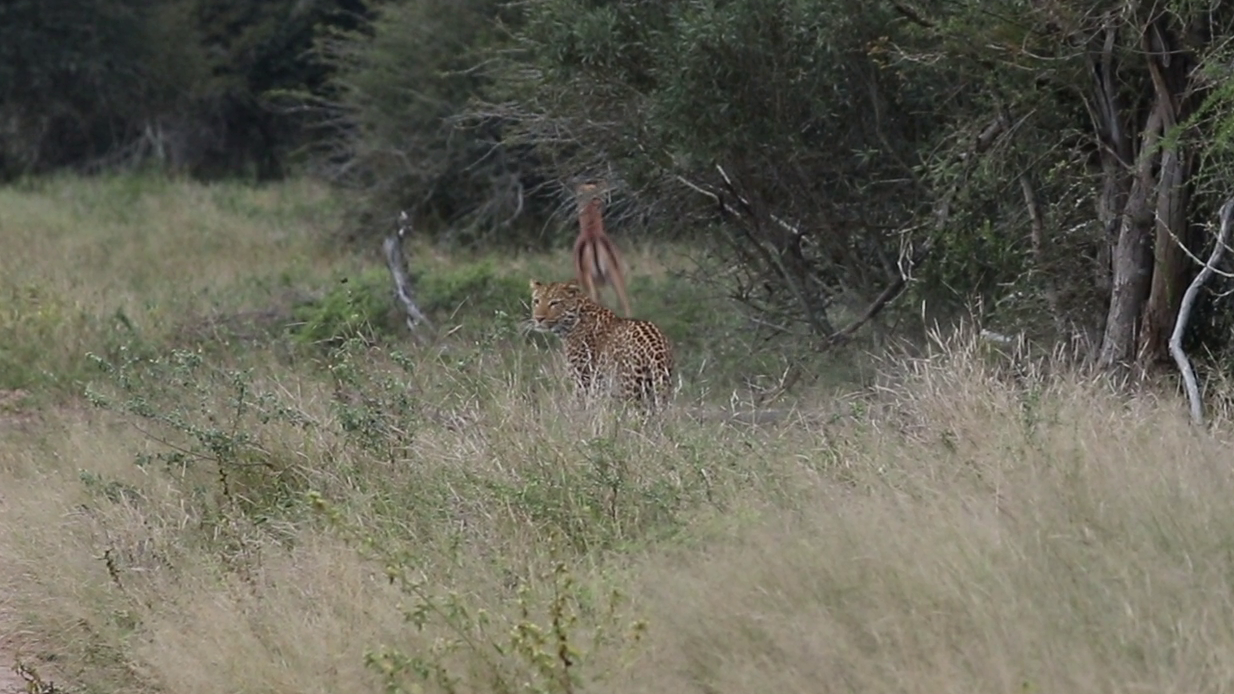
Leaving it, and us, to wonder how it let this one get away.
Leopard Stalking Skills
Leopards have a well-deserved reputation as efficient killers. But a lot of factors need to come together for them to be successful.
Using a combination of superb camouflage and silent movement, they get as close as possible before launching a blitz attack.
Their camouflage comes from their rosette-spotted coats. These black markings break up their outline against a variety of backgrounds.
Research suggests the yellow-gold background colouration is seen as green by antelopes, further assisting them in blending into their environment.
For silent movement, they carefully place their hind paws exactly where their forepaws were, reducing the chance of standing on a stick and alerting their prey.
When these come together, the success of the hunt is down to their amazing reflexes and brute strength.
As this video shows, though, even that might not be enough. Leopards are only successful in between 14% and 38% of their attempts.
